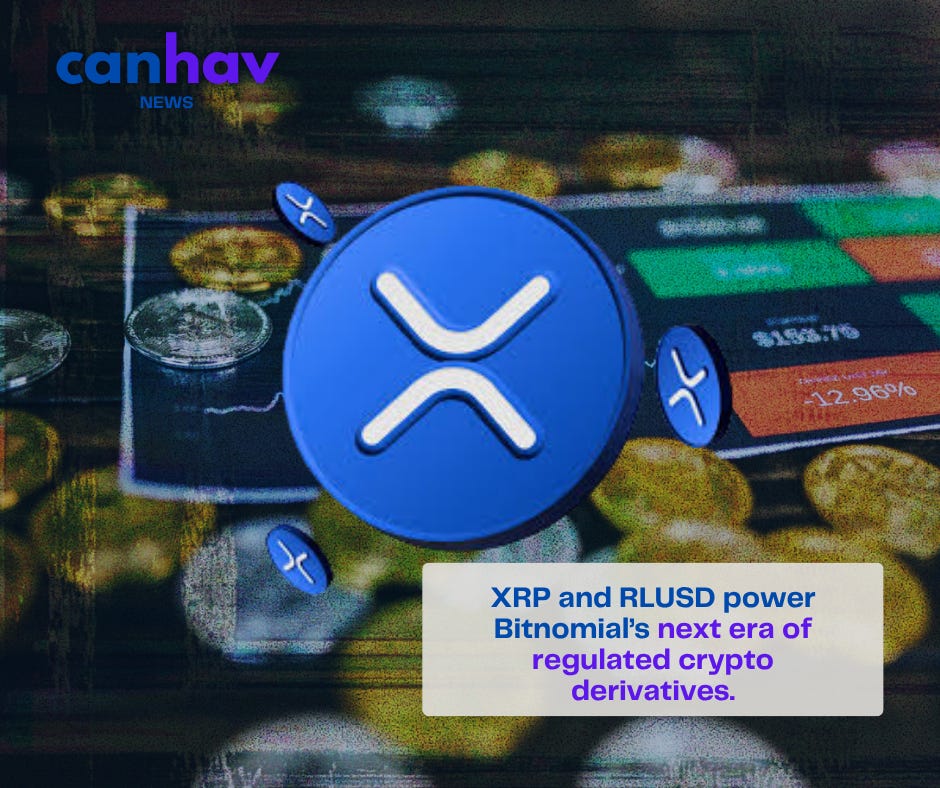U.S. Derivatives Clearinghouse Bitnomial Opens Stablecoin and XRP Collateral for Leverage Trading
The move enhances capital efficiency and institutional access by allowing a stablecoin (Ripple USD) and XRP as margin under Commodity Futures Trading Commission supervision.
Bitnomial has become the first U.S.-regulated derivatives clearinghouse to accept Ripple USD (RLUSD) and XRP as margin collateral under full Commodity Futures Trading Commission (CFTC) oversight, expanding capital efficiency, enhancing blockchain-native settlement, and signaling a new era for regulated crypto derivatives.
Capital Efficiency Expands
Bitnomial, Inc. announced on November 4 2025 that its U.S.-based cleared derivatives platform will accept Ripple USD (RLUSD) and XRP as margin collateral. The move makes Bitnomial’s clearinghouse the first U.S.‐regulated derivatives clearing organisation (DCO) to accept a stablecoin for margin. (CoinDesk) Under the new framework, institutional clients can post RLUSD and XRP for leveraged perpetuals, futures and options on the Bitnomial Exchange, LLC, while retail access will become available via Bitnomial’s retail arm, Botanical.
CEO Luke Hoersten said that “adding RLUSD and XRP as margin collateral represents a major evolution in how traders can deploy their digital assets.”
Implications for Derivatives & Collateral Markets
From a derivatives-market standpoint this is meaningful: by enabling a USD-pegged stablecoin alongside a liquid altcoin as collateral, Bitnomial is enhancing capital efficiency and offering a new collateral rail beyond traditional fiat or segregated assets. In practical terms this could reduce conversion friction for institutional clients when backing positions. Anecdotal commentary notes that traders now see “utility going mainstream” for XRP and RLUSD, suggesting that deeper integration into regulated trading flows may enhance liquidity and market depth.
While there are no public volume figures yet tied specifically to the new collateral flows, the announcement signals both increased leverage capacity and potentially lower cost of margin, key variables when evaluating derivatives open interest growth.
Mechanics & Regulatory Context
Bitnomial’s platform is overseen by the CFTC as a derivatives exchange (DCM) and clearinghouse (DCO) and now supports digital-asset collateral under those regulatory licences.
Under this model, RLUSD and XRP deposits can be used directly for margin instead of first converting into USD or treasury collateral. This streamlines onboarding for crypto-native funds and supports on-chain settlement dynamics. Retail traders will gain access via Botanical, while institutional participants are already enabled.
The integration of a stablecoin marks a structural shift: stable-coins have traditionally been seen in spot trading or payments use-cases, but here they are entering margin bedding for derivatives cleared under U.S. law.
What’s Next for Institutional Crypto Access?
This development suggests a deeper blending of traditional derivatives infrastructure with crypto-native assets. For market participants, the use of RLUSD and XRP as margin collateral may increase the attractiveness of crypto derivatives by reducing barriers to entry and leveraging digital-native liquidity rails. From a regulatory angle, the move forms a real-world test of how digital assets can plug into regulated clearing frameworks. The key analytics to watch will be the growth in open interest on Bitnomial’s platform, changes in margin efficiency ratios (collateral posted per unit exposure) and whether other DCOs follow suit.
Bottom line: a structural inflection in how crypto assets are treated in derivatives markets, one that could accelerate institutional involvement.
Want more insights on crypto markets and derivatives, including latest news, key metrics, and credible data? Consider subscribing to Canhav Crypto Research.



